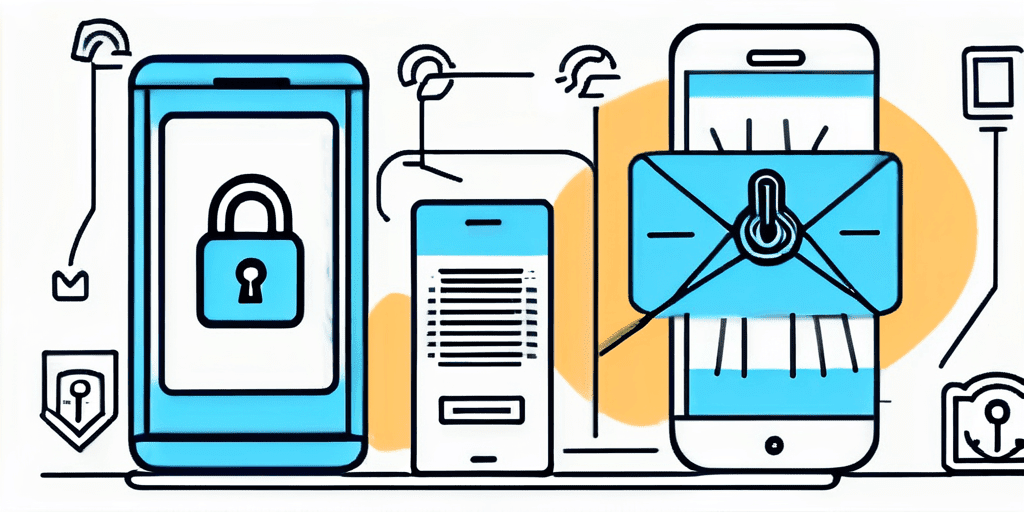In today’s digital age, cybercriminals are constantly finding new ways to exploit individuals and organizations. One such method that has been on the rise is smishing attacks. Smishing, a portmanteau of “SMS” and “phishing,” refers to a type of scam that relies on text messages to trick unsuspecting victims into divulging sensitive information or downloading malware onto their devices.
Understanding Smishing Attacks
Definition of Smishing
Smishing, a portmanteau of “SMS” and “phishing,” involves the use of text messages to deceive recipients into taking a certain action, such as clicking on a malicious link or providing confidential information. These messages often appear to be from a legitimate source, such as a bank or a service provider, making it crucial for users to be able to identify and avoid falling victim to such attacks.
The Evolution of Smishing Attacks
Over time, smishing attacks have become increasingly sophisticated and difficult to detect. Cybercriminals have evolved their tactics to leverage advancements in technology and social engineering techniques, making it imperative for individuals to stay informed and vigilant.
One of the key factors contributing to the evolution of smishing attacks is the widespread use of smartphones. With the growing dependency on mobile devices, cybercriminals have recognized the potential of targeting users through text messages. The convenience and immediacy of SMS make it an attractive medium for attackers to exploit.
Moreover, the rise of mobile banking and payment apps has provided cybercriminals with new avenues to exploit unsuspecting users. These apps often require users to link their bank accounts or credit cards, making them prime targets for smishing attacks. By impersonating a legitimate financial institution, attackers can trick users into revealing their sensitive information, leading to financial loss and identity theft.
The Mechanics of a Smishing Attack
How Smishing Works
Smishing attacks typically begin with the cybercriminals gathering phone numbers, whether through data breaches or other means. They then send out mass text messages pretending to be from a reputable organization. These messages often contain enticing offers, urgent requests, or alarming warnings to grab the recipient’s attention and elicit a response.

Once the victim engages with the smishing message, they may be asked to click on a link, which redirects them to a fake website that mimics a legitimate one. This fraudulent website’s purpose is to trick the victim into revealing sensitive information, such as passwords, credit card details, or social security numbers.
Common Techniques Used in Smishing
Cybercriminals employ various techniques to make their smishing messages appear legitimate. Some common tactics include:
- Using a spoofed phone number or a familiar sender name to deceive the recipient.
- Creating a sense of urgency to manipulate the victim into taking immediate action.
- Making the smishing message visually appealing with well-designed graphics and logos.
- Impersonating trusted organizations like banks, government agencies, or popular online platforms.
One technique that cybercriminals often use to make their smishing messages seem more authentic is personalization. By including the recipient’s name or other personal details in the text message, the attackers create a sense of familiarity and trust. This can make it even harder for the victim to recognize the message as a scam.
Another technique employed by smishers is social engineering. They leverage psychological manipulation to exploit human emotions and vulnerabilities. For example, they may play on the recipient’s fear of financial loss by sending a message claiming that their bank account has been compromised and immediate action is required to prevent further damage. By preying on people’s natural instincts to protect themselves and their assets, smishers increase the chances of a successful attack.
In addition to these techniques, smishing attacks often involve the use of URL shorteners. These services condense long website links into shorter, more manageable ones. Cybercriminals use URL shorteners to hide the true destination of the link, making it harder for recipients to identify potential risks. This tactic adds another layer of deception to the attack, as the victim may be more inclined to click on a seemingly harmless shortened link.
It is crucial to remain vigilant and skeptical when receiving text messages, especially those requesting personal information or urging immediate action. By understanding the mechanics and common techniques used in smishing attacks, individuals can better protect themselves from falling victim to these malicious schemes.
Recognizing Smishing Attacks
Red Flags in Smishing Messages
By paying attention to certain red flags, individuals can better identify and protect themselves from smishing attacks. Some signs that a message might be a smishing attempt include:

- Unsolicited messages from unknown or suspicious senders.
- Grammatical or spelling errors in the message, indicating a lack of professionalism.
- Requests for personal information or financial details via text message.
- Offers or prizes that seem too good to be true.
However, it’s important to delve deeper into the world of smishing to truly understand the tactics employed by cybercriminals. Smishing attacks often rely on psychological manipulation to trick unsuspecting victims into divulging sensitive information or performing actions that could compromise their security.
One common technique used by smishers is creating a sense of urgency. They may send messages claiming that there is an issue with the recipient’s bank account or that their account has been compromised. By instilling fear or panic, smishers hope to bypass the recipient’s critical thinking and prompt them to act impulsively.
Distinguishing Smishing from Genuine Messages
It’s important to note that not all text messages may be smishing attempts. Legitimate organizations sometimes use SMS to communicate with their customers. However, there are certain hallmarks of genuine messages that can help distinguish them from smishing attempts:
- Consistent use of the organization’s official branding and logo.
- Requests for information that is usual or expected in the context of the relationship with the organization.
- Messages that provide specific and verifiable account details relevant to the recipient.
- Ability to verify the message by reaching out to the organization directly through trusted contact channels.
Furthermore, it’s crucial to understand that smishing attacks are not limited to text messages alone. Cybercriminals have expanded their tactics to include other communication channels, such as voice calls and social media platforms. These attackers are constantly evolving their methods, making it essential for individuals to stay vigilant and informed about the latest smishing techniques.
By familiarizing themselves with the various red flags and distinguishing characteristics of smishing messages, individuals can enhance their ability to identify and protect themselves from these malicious attacks. Remember, knowledge is power when it comes to safeguarding your personal information and maintaining your online security.
The Impact of Smishing Attacks
Potential Risks and Damages
Smishing attacks can have severe consequences for individuals and businesses alike. Some potential risks and damages include:

- Financial loss through unauthorized access to bank accounts or credit card fraud.
- Identity theft, with personal information being used for malicious purposes.
- Compromise of sensitive business data or trade secrets.
- Reputational damage for organizations that are associated with smishing attacks.
Why Smishing is a Growing Concern
As technology continues to advance, smishing attacks are becoming increasingly prevalent. The ubiquity of smartphones, coupled with the constant connectivity they provide, makes individuals more susceptible to falling victim to such scams. Moreover, cybercriminals are continuously adapting their methods, making it crucial for users to stay informed about the latest tactics employed in smishing attacks.
One reason why smishing is a growing concern is the ease with which cybercriminals can impersonate legitimate organizations. They often use sophisticated techniques to make their messages appear genuine, such as spoofing phone numbers or creating convincing replicas of well-known brands. This level of deception can easily trick unsuspecting individuals into divulging sensitive information or clicking on malicious links.
Furthermore, the impact of smishing attacks goes beyond immediate financial or data loss. Victims may also experience emotional distress and a loss of trust in digital communication channels. The violation of personal privacy can leave individuals feeling vulnerable and violated, leading to long-term psychological effects.
How to Avoid Smishing Attacks
Best Practices for Prevention
Protecting oneself from smishing attacks requires a combination of awareness and cautious behavior. Here are some best practices to avoid falling victim to smishing:
- Be skeptical of unsolicited messages and never click on links or call phone numbers provided in such messages.
- Double-check the sender’s identity and the legitimacy of the message before responding or providing any personal information.
- Avoid sharing personal or financial details over text message, especially when prompted by an unknown sender.
- Keep your mobile device’s operating system and apps up to date to benefit from the latest security patches.
- Install and regularly update a reliable mobile security solution that can detect and block smishing attempts.
Steps to Take if You’re a Victim
If you suspect that you have fallen victim to a smishing attack, it is crucial to take immediate action to mitigate the potential damages. Here are some steps you should consider:
- Notify your mobile service provider and report the incident, providing them with any relevant details.
- Contact your financial institutions and inform them of the situation, taking appropriate steps to protect your accounts.
- Change passwords for all of your online accounts to prevent unauthorized access.
- Consider freezing your credit reports to prevent identity theft.
- Stay vigilant and continue to monitor your financial statements and online accounts for any suspicious activity.
In addition to these steps, it is important to understand the tactics used by smishers to better protect yourself in the future. Smishing attacks often rely on social engineering techniques to manipulate victims into taking actions that compromise their security. These techniques can include:
- Creating a sense of urgency or fear in the message to pressure the recipient into responding immediately.
- Impersonating trusted organizations or individuals to gain credibility and deceive the recipient.
- Using enticing offers or prizes to lure victims into providing personal information.
- Exploiting human curiosity by sending messages that appear to contain confidential or sensitive information.
By being aware of these tactics, you can be better equipped to identify and avoid smishing attacks in the future.
Furthermore, it is worth noting that smishing attacks are constantly evolving as cybercriminals adapt their strategies to bypass security measures. They may employ sophisticated techniques such as spoofing legitimate phone numbers or using advanced malware to exploit vulnerabilities in mobile devices. Staying informed about the latest smishing trends and keeping up with security updates is essential to maintaining your defenses.
In conclusion, smishing attacks pose a significant threat to individuals and organizations, with cybercriminals constantly refining their techniques. By understanding how these attacks work, recognizing the red flags, and implementing preventative measures and best practices, you can fortify yourself against the dangers associated with smishing. Stay informed, stay cautious, and stay protected.
Don’t let smishing attacks compromise the cybersecurity of your business, especially when dealing with sensitive medical devices and compliance requirements. Blue Goat Cyber, a Veteran-Owned company, specializes in a comprehensive range of B2B cybersecurity services tailored to protect your organization. From penetration testing to HIPAA and FDA compliance, our expertise is your safeguard against sophisticated cyber threats. Contact us today for cybersecurity help and partner with a team that’s as committed to your security as you are to your clients.
